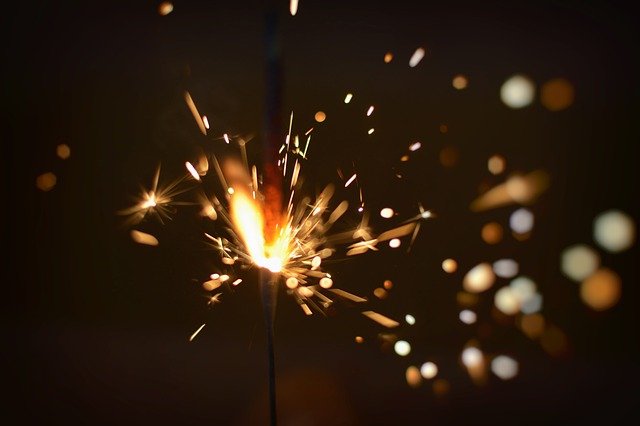

What do you do when an outlet starts sparking? Don’t go ducking for cover just yet. Not all sparks are signs that your device is going to explode! As a matter of fact, there are various colors of sparks that you should be on the lookout for as they can say a lot about the health of your electrical connection and status. And while you’re at it, find out more about the current electricity tariff as well.
Contents
Outlet sparks should, and always, be blue. They come and go in the blink of an eye, about one second, and often come when you are about to plug your device in. These small sparks that occur from time to time are normal because the electricity in the main circuit is constantly running, but if this is a frequent issue, you should contact a professional to get the outlet or wiring checked out.
If the spark is white, bright yellow or orange in color, emerges quite big in size and distance or lasts more than one second, it should be a cause of concern that you should get an electrician’s help to look into. White sparks are often due to an overload of electrical flow which often happens when you have an outlet powering up too many appliances at a time. Yellow and orange sparks are more dangerous as they could be signaling that there are issues with your wiring or that there could be existing electrical damage.
Another cause of alarm would be if you notice a burning smell from the outlet.
When you notice these signs, immediately unplug your appliances and turn off the main switch before calling a professional for help and advice.
As we have mentioned, overloading could be a cause of sparks as well as a sign that your outlet is struggling to support current flow and interruptions while running too many appliances.
To fix this, organize your plugs and sockets well and distribute the electricity flow healthily. If you find yourself having to rely on a small number of outlets, do consider installing more in your home so you can better distribute your appliances.
A short-circuit occurs when an overheated live wire comes into contact with another, either the neutral or ground wire. This worsens as a short-circuit would result in additional current flows in the circuit, worsening the overheating and causing an electrical fire.
Water is an unfortunate conductor of electricity, which is why appliances that are situated near wet rooms such as the kitchen and toilet, or circuits that are near plumbing systems should be carefully monitored. If an outlet is wet, sparking can occur and also an electrical fire.
Just like us mortals, outlets and wires get worn out with time. They lose shape and efficiency in conducting electricity and generate more current to compensate, increasing the chances of sparking and overheating. To avoid this, keep your home electrical system up to date and checked by a professional every ten years.
Electrical installation is a highly complex and arduous process and errors in installation can happen. This could lead to problems channeling electricity within the home and in the worst case, fire. To avoid these situations, get a professional’s help as they have spent a long time training in this field to avoid such errors.
If it is a short and small white spark, it is considered a normal spark. Still, it should not be totally ignored and these occurrences should be documented for your own future reference to see if your home is showing you increasingly frequent signs that it needs a circuit review. Call in an electrician if the sparks are orange or yellow, last more than a second, and are big in size, and unplug your appliances to prevent further damages.
Here is a list of popular safe practices to prevent sparks and have a healthy performing electrical circuit overall.
So don’t freak out once you see sparking from your outlets! We know it can be quite freaky, but at least now you are well equipped with knowing what properties of normal and dangerous sparks to look out for. Make sure to childproof your house if you have young ones or naughty pets around, practice good habits such as unplugging plugs by their heads and not by their cords so you don’t loosen any wires, and turn off outlets that show signs of heat or electrical damage. As confident as you can be about fixing these problems yourself, it is always still best to consult the help of electricians that can greatly reduce the risks of wiring faults and keep your home safe and running efficiently. They can also advise you according to the current market and modern home practices and standards so your system can support new and upcoming technology without freaking out.
The year 2020 and the pandemic threw a wrench into everyone's plans. Companies that were…
AI is successful in boosting the productivity of organizations while helping them save cost and…
Suppose you battle back discomfort or other associated ailments due to sitting for lengthy periods…
In November 2023, investor Maksym Krippa acquired the Parus Business Center, redefining the commercial real…
Programmers create computer programs, mobile solutions and also analyse the needs of their clients and…
A trip to Santiago is sure to be memorable by default as simply seeing this…